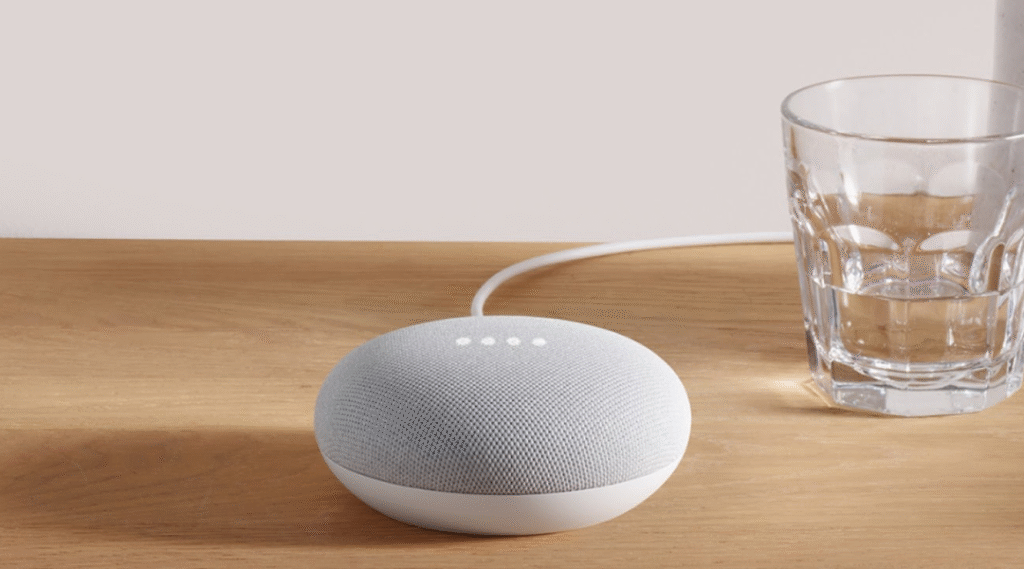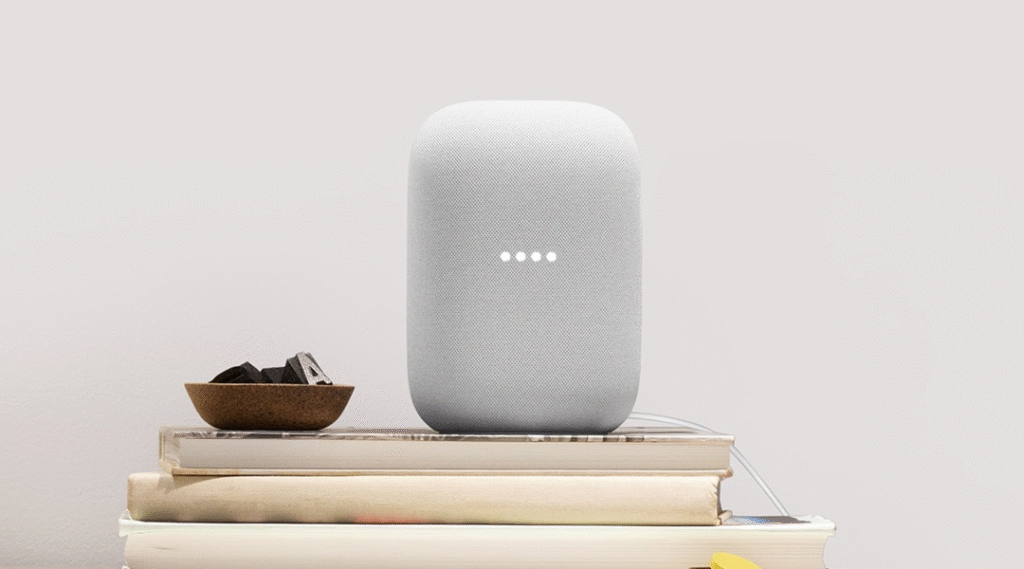Picking the right Google smart speaker comes down to one question: do you want a compact voice helper that disappears into a shelf, or a full-sized speaker that actually changes the soundtrack of your room? Google’s Nest Mini and Nest Audio both run Google Assistant and share the same smart ecosystem, but they’re built for different jobs. This guide walks through the key differences and helps you decide which is the better fit.
Quick verdict
If sound quality and fuller bass are priorities for your living room or kitchen, choose the Nest Audio. If you need a super-compact, budget-friendly assistant for a bedroom, bathroom, or hallway, the Nest Mini is the smarter, simpler pick.
Size and placement
The two devices are strikingly different in scale. Nest Audio is a noticeably larger speaker — roughly 7 inches tall and 5 inches wide — designed to sit as a room speaker. The Nest Mini is tiny by comparison (about 2 inches tall and 4 inches wide) and easily blends onto a table, nightstand, or wall. That size difference is the single biggest clue about intended use: more presence and air for Nest Audio, near-invisible convenience for Nest Mini.
Sound: what you’ll actually hear
Google markets the Nest Audio as “our best-sounding speaker” with more powerful bass, while the Nest Mini promises “great sound” from a compact package. That translates to real differences: the Nest Audio delivers fuller midrange and deeper low end suitable for music listening, podcasts, and small gatherings. The Mini is more than adequate for spoken responses, casual background music, and single-room listening, but it won’t fill the room the way the larger unit will. If music quality matters, lean toward Nest Audio.
Voice pickup and responsiveness
Both models come with built-in microphones to hear you across the room; the comparison shows parity in microphone hardware. That means you’ll get reliable voice control and Assistant responsiveness on both devices. Where they differ is in how that voice interaction pairs with sound — Nest Audio’s stronger speaker can make Assistant responses feel richer, while the Mini’s responses are concise and efficient.
Smart features and room intelligence
Both speakers come with Google Assistant and support the same voice features — timers, smart-home control, answers, and routines. Nest Audio adds a “Smart Sound” capability that helps it adapt its output to the room automatically, improving perceived clarity and balance depending on placement. If you want a speaker that optimizes itself to the space without fiddling with EQ settings, this is a meaningful advantage for the bigger unit.
Practical considerations: multi-room, budget, and placement
- Multi-room audio: Both can be grouped with other Nest devices, but the Nest Audio will create a more uniform, robust multi-room setup when paired with other full-size speakers.
- Budget: The Nest Mini is the lower-cost option and is often sold in multi-packs or on frequent sale—great if you need assistants in many rooms.
- Space constraints: If you have limited surface area or want wall mounting, the Mini’s size and design win. If you have an open-plan living area, the Audio’s larger voice and deeper bass justify the footprint.

Who should buy which?
Choose Nest Audio if:
- You care about music quality and fuller bass.
- You want a single speaker to be the main audio source in a room.
- You value a speaker that adjusts its sound for the room.
Choose Nest Mini if:
- You want an inexpensive, compact Google Assistant device for many rooms.
- Your primary use is voice control, timers, and short audio snippets.
- You need something unobtrusive that can hide on a shelf or wall.
Final recommendation
There’s no universal “better” — only the better choice for your priorities. The Nest Audio is the right call when sound performance and room presence matter; the Nest Mini is perfect for budget-conscious buyers who want the convenience of Google Assistant in small spaces. Evaluate where you’ll place the device, how much you care about music fidelity, and how many rooms you want covered — those answers will point directly to the right Nest for you.
Quick side-by-side spec table — Nest Audio vs Nest Mini
Below is a compact, printable side-by-side table comparing the Nest Audio and Nest Mini (based on Google’s official comparison and product pages).
| Spec / Item | Google Nest Audio | Google Nest Mini (2nd Gen) |
|---|---|---|
| Typical use / best fit | Main room speaker — music, podcasts, fuller sound | Small-room assistant — bedroom, hallway, kitchen; background music |
| Dimensions | ~7 in × 5 in (taller, room-filling) | ~2 in × 4 in (compact, shelf or wall) |
| Speaker description | “Our best-sounding speaker, with powerful bass” — fuller midrange and stronger low end | “Great sound on a speaker that fits almost anywhere” — compact, punchy for size |
| Microphones | 3 mics (far-field voice pickup) | 3 mics (far-field voice pickup) |
| Smart sound / tuning | Smart Sound — adapts EQ to room automatically | No room-adaptive Smart Sound feature |
| Auxiliary input | (No auxiliary input listed on comparison) | (No auxiliary input listed on comparison) |
| Available colors | Multiple fabric colors (charcoal, chalk, etc.) | Multiple colors (charcoal, chalk, etc.) |
| Storage / multi-room | Supports grouping/stereo pairing; better for robust multi-room setups | Can be grouped with other Nest devices for multi-room |
| Typical MSRP / retail range | MSRP ~$99 (retail prices and discounts vary by store). | MSRP ~$49 (retail prices/deals vary; some listings show ~$50–$60). |
Sources: official Google comparison and product pages. (Google Store)
More articles for the similar topic:
iPhone 16 vs. iPhone 17: Is the Upgrade Really Worth It?
Are the Ray-Ban Meta Wayfarer Gen 2 AI Glasses the Right Products to Buy?
Is the 2025 BMW X3 xDrive30 a Smart Buy? A Clear and Practical Look
Model X Review: Is Tesla’s Flagship SUV a Smart Luxury Purchase?
Voice-First Revolution: A Deep Dive into Smart Speakers and Displays
As for in-depth insight articles about AI tech, please visit our AI Tech Category here.
As for in-depth insight articles about Auto Tech, please visit our Auto Tech Category here.
As for in-depth insight articles about Smart IoT, please visit our Smart IoT Category here.
As for in-depth insight articles about Energy, please visit our Energy Category here.
If you want to save time for high-quality reading, please visit our Editors’ Pick here.



